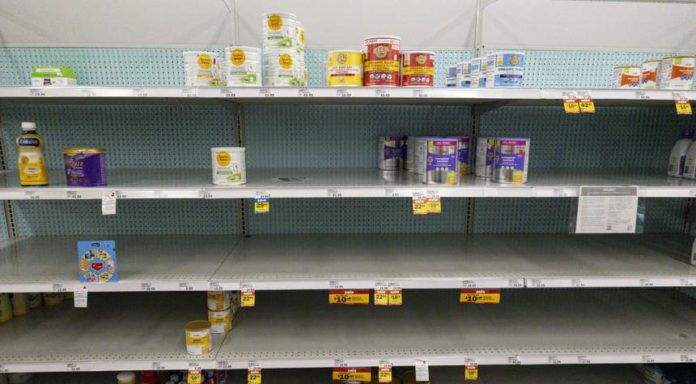The supply chain crisis is one of the main causes of our economic woes. Last year we had to deal with backups at ports along both coasts. This year, the shortage of baby formula has brought attention to problems in the supply chain (and the government’s response).
According to the prevailing wisdom, the supply chain crisis will end soon and be temporary. Is that true? A website covering the trucking and logistics industry is headed by a CEO who is not optimistic.
FreightWaves CEO Craig Fuller has published an editorial explaining why he thinks the supply chain will not improve anytime soon.
Fuller explains in the introduction of his article that the world has changed permanently and that supply chains will face continued challenges for many decades.
Global unrest is one of the main factors contributing to the longer duration and greater intensity of the supply chain crisis. Global unrest is causing ripples in the supply chain, which can have devastating effects on other parts of the globe. We are already feeling the consequences of these events from half a planet away.
Fuller writes that “Natural catastrophes, terrorism, and economic cycles have all created problems since the inception of trade.”
The supply chain is strongly affected by global political tensions.
Fuller points out that the United States has become less insular and has lost its role as the world’s policeman. China, however, has begun to show some muscle and become a global competitor to America. The result is a world that has become much more unstable and less peaceful.
The supply chain is also influenced by labor issues. Fuller points out how developing countries became manufacturing centers because they had cheap labor, low environmental and labor regulations, and little concern for sustainable natural resources. The problem is worse in the U.S., where there are too many jobs.
Although Fuller’s article doesn’t address politics, he does make an interesting point about global corporate liberalization. According to Fuller, the increasing emphasis of corporations on ESG (Environmental, Social, and Governance), requirements is hampering global supply chains.
He points out that this pressure could lead to goods not being available to Western consumers if they are made in factories that do not meet Western standards for human rights and environmental control. “Factories that produce goods that meet Western standards will usually be more costly, and there will be less buff stock.”
Fuller adds then what appears to be an indictment against this shift towards more leftward-leaning issues.
“The same ESG standards also pose challenges to commodity producers as the cost of adhering to environmental and social disclosures increases the price of production. Consequently, the world is currently short of sufficient energy resources to withstand the effects of the Russia-Ukraine conflict.”
Fuller believes that there are some trends that will eventually improve the supply chain. Fuller sees American companies seeking to source products closer to home. This could be a boon for Latin America, at the expense of China.
He adds that the American South and Midwest will see an acceleration in manufacturing and production. They can offer predictable and resilient supply without the geopolitical risk of foreign suppliers or labor unions from the Rust Belt.
He believes that freedom trading, which he calls “Freedom Trading”, will replace the idea of free trade. I’ll be analyzing this concept in a future article.
As the supply chain evolves, technology will also be a winner. Companies will be able to overcome the logistics and sourcing issues currently plaguing their supply chain with automation, robotics, and intelligence systems. He expects to see continued growth in “real-time market intelligence information,” which has seen explosive growth over the past few months because shippers realized that supply chains aren’t returning to normal. High-frequency data is becoming increasingly important for success.
Let’s hope that a more resilient supply network with some changes in the status quo will help us overcome our current problems and prevent future ones.










